The Water-throwing Festival
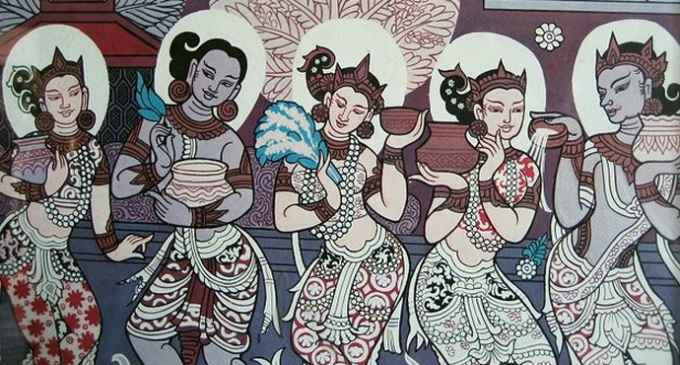
Tagu (April), the first month of the Myanmar calendar, is the month for the much-expected Water-throwing Festival. The weather is arid, the occasional puffs of wind heated, and all nature seems tired under the scorching sun. The previous month, Tabaung, has been hot but it was cool in the mornings and evenings. At least the noon heat was bearable. Now it is more dusty, thirsty; what a long, long day — twelve hours of daylight. Oh, for a joyous soaking of Thingyan showers!

On the mental side, too tiredness has set in. The old year is approaching its close. There have been both weal and woe over the last twelve months of the year. But hopefulness of the mind for the future holds a curious expectancy for the new year. “Ring the old year out, let’s ring in the new year!”
Yet, Thingyan-eve is one of the most, if not the most, exciting of Myanmar season. The men-folk at their monotonous routine brace up with the happy thought of the oncoming holidays, the womenfolk make preparations for the year’s most absorbing festival. So you see at the secluded corner of the house a small table or row of tables with three earthen pots filled with a variety of flowers in water. The Thabye (Euge-nia), Myeza (doob grass) and Zi (Zizyphus) are, of course, there, whatever the rest might be. The Thabye is an auspicious and its new leaves are termed not merely leaves but “flowers”. The housewife has her larder filled with the necessary provisions, for Thingyan is a period of complete rest from all commercial activity for three full days. She would be busy planning for the snack bar, an important spot during the Thingyan.

Thingyan is a Myanmar borrowing from Sanskrit “Sankranta” which means “changing over” or “rotating”. According to popular legend, this rotating originated from the beginning of the universe when a certain Brahma named Kali and Sakka, the King of the Celestial world, referred a dispute to a sage of the earthly world wherein the Brahma was adjudged the loser. Consequently, the Brahma had his head cut off as mutually agreed beforehand, and the noble head found no fitting resting place. Hence the winner Sakka arranged to have the Brahma’s head held in the hands of each of the selected celestial maidens for a period of one year. San-kranta is the time of rotation of guardianship of the head when it changes hands. Connected with it is the popular belief that during the Thingyan period the Thangyamin (the Myanmar name for Sakka who is also identified with the Vedic deity Indra) makes his annual visit to the realms of earth and notes down the names of the good doers and the evil doers.
One might not give much thought to this eerie legend but the connotation of the word Sankranta still holds good. It means “changing over”, and to be realistic, it is applied to the changing of the year, although Hindu astronomy would apply it to the changing of the season from Mina (Tabaung) to Mesa (Tagu).
The custom of water-throwing also is traced back to Buddhistic legend. It is said that in the Buddha’s day the royal Sakya family spent a frolicking time each year at this season near some beautiful lake, throwing water at one another. This legend perhaps fascinated a Bagan King, Narasihapate (the last of the Bagan Dynasty) who, the Glass Palace Chronicle records, enjoyed the water-throwing festival at this month of the year. It is stated that he had all the royal route from his palace to the bathing-site on the Ayeyawady fully enclosed — and the bathing-site also was enclosed from public view — when he and his maids-of-honour indulged in the water frolic.
What we are concerned here is not the origin of this festival but its spirit. Thingyan is a festive occasion when the Myanmar people, young and old, indulge in fun and frolic. It is a time of good will and cheer, of innocent indulgence and laughter. Water is thrown at each other without discrimination, and retali-ated likewise in good sport. Even the shyest girl is not spared and she responds with good humour and courage. The underlying meaning of the water-throwing is to cleanse the dirt, physical as well as mental, that may have accumulated about the person in the course of the year. And cleanse it does. One feels refresh-ed, nay, resuscitated at the cool touch of Thin-gyan showers on one’s body. If there had been misunderstandings between persons it is now forgotten; if there had been ill-will it is now washed away. The whole nation goes for the festival and there is a blessed period of carefree life, jovial and happy, which has immense recreational value.
The exact date and the precise time of the commencement and termination of Thingyan are fixed by astrological calculations and publicly notified. On the morning of the Thin-gyan Commencement day, the family wash their hair with specially-prepared juice obtained from kimmun fruit and tayaw bark. Let not the dirt of the past year be carried over to the new year.

The early morning of a Thingyan day greets you with the enchanting scent of the Padauk (Pteorocarpus indicus) flower, a never-failing com-panion of Thingyan. This golden flower never blooms but bursts, and it does burst full force on auspicious days only. The elderly Myanmar have a sure but strange observation about Nature that the first showers of the Monsoons come after the Padauk has bloomed forth thrice. To a Myanmar, of course, Thingyan, Padauk and goodwill are one at this season.
There is also the sedate aspect of Thingyan’s spirit of goodwill. The elderly people would on the three days (sometimes four days — the Myanmar calendar being lunar and therefore irregular) spend their time fruitfully at a sequestered monastery or pagoda or rest-house (for there are many rest-houses donated to the public by the well-to-do), keeping Sabbath, meditating or reading the Law. To them, unlike the younger folk, Thingyan is a period of religious devotion, of prayers for the welfare of all beings — earthly as well as celestial — of offerings and deeds of merit. That is why you will see the people active with enthusiasm, making offerings to the Sangha (the Holy Order) and all that come, whether invited or not, as a typical sight during Thingyan. One partakes of the feast with equal enthusiasm, for Buddhist ethics says that you, thereby share the merit of the donor. “Well-done, well-done, well-done” (Sadhu, Sadhu, Sadhu), he says in solemnity and happiness.
The donor and the donee are thus united in their deed of merit. In fact they are so destined by their past deeds of mutual merit in their previous existences buried in oblivion.
You should not, however, have a very serious impression of the affair. Donations are made daily by the Buddhists, (giving is the first of the Ten Buddhist Virtues) and the same solemn words of approval uttered every time a meritorious deed is met with. Thingyan only brings donations on a bigger scale and rejoic-ings in a freer degree.
The mornings would be mixed with the sonorous beat of the big drums and the ticklish piping of the Myanmar flute (hne) that charac-terise an offering ceremony. The evenings are filled with the fast beat of cymbals and one-side-open drums (o-zi), of a portable type of medium-sized drum (dhobat), which proclaim a happy procession, here a procession of, say, dona-tions to the monastery, or to the pagoda, devotees going for the washing of the images of the Buddha — another typical Thingyan sight. See how the dancer dances. His is not the hypnotized dance of the ascetic but the expression of mirth and joy, of the emotional satisfaction with his own participation aroused by both religious and social fervour.
Dear reader, my picture is too Myanmar, too truly traditional, too perfect. Times have changed and the modes of celebrating Thin-gyan have, at least in the two big towns of Yangon and Mandalay, changed. Instead of the simple acts of water-throwing with clean vessels, usually silver bowls, you will today see only fire-hoses or garden-hoses let loose on the public that happen to be on the road. Good humour still prevails but it must also be admitted that many an irritation is caused especially when due regard and respect towards the fair sex are found lacking. But does the fault solely lie with the stronger sex? Are our cosmopolitan Myanmar maidens the same as those simple dainty girls of a generation or so ago? It is idle to discuss it here. For better or for worse, the change has come.
Another innovation that I cannot appreciate as having anything relevant with Thingyan is the mounted orchestras on decorated cars. These show-boys and show-girls — for what else are they? — are not for the water-throwing, that is, neither must you throw water at them nor would they at you. They have spent weeks (in Mandalay, I know, months) rehearsing their show at enormous cost in time, money and energy, just for the fun of displaying themselves in the hot sun for three successive days. They are mounted on ingeniously-made trucks turned into a white swan or a gold fish or a rocket or a bamboo raft or a steam-boat or Myanmar harp or what not. Being on display they do not have any roof above or wear any hats or sunshades. I admire their hardiness, considering the intensity of the April sun.
They sing, they dance, they mimick those who are off the track socially, morally or politically. With them the fun does not relate to water-throwing. They do not throw water but they do throw invective. The political party or parties, politi-cians, officials, cut-throat businessmen, ultra-modern girlhood, these are their objects. The spectators smile at their biting remarks as they inveigle in rhymed words, one of the group leading with the opening rhyme and the rest rejoining with a closing rhyme. I personally do not believe in the usefulness of these rhymes (or Than-gyats) at this particular season. Thingyan is not a time for finding fault in others: it is one for forgiving and forgetting. Some youthful modernists might say it is democracy in a modern manifestation of freedom of expression, but I cannot reconcile the innocent indulgence of Thingyan with such invective caricature. These rhymes may be good as a vent for suppressed feelings but they should be let out elsewhere, on any other occasion, but not at this festival. For it spoils the very basic concept of Thingyan.
U Tin Oo (Myaung)
./wp-content/uploads/2018/10/Emirate-Online-TDY.png)







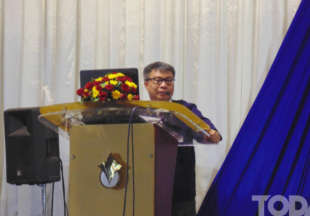
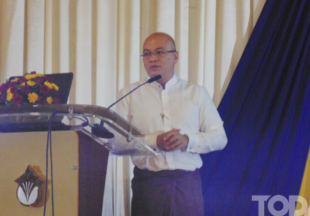

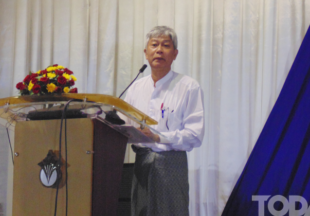
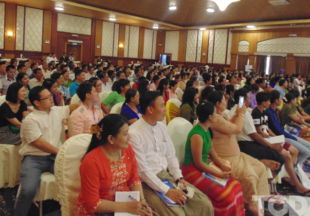



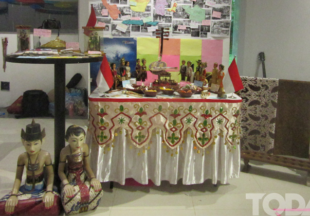

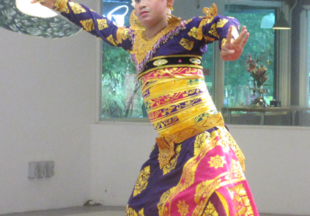

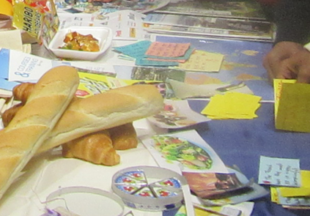


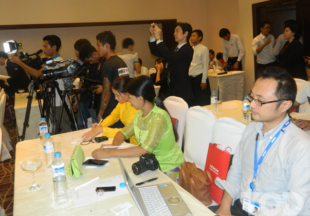










There are no comments at the moment, do you want to add one?
Write a comment